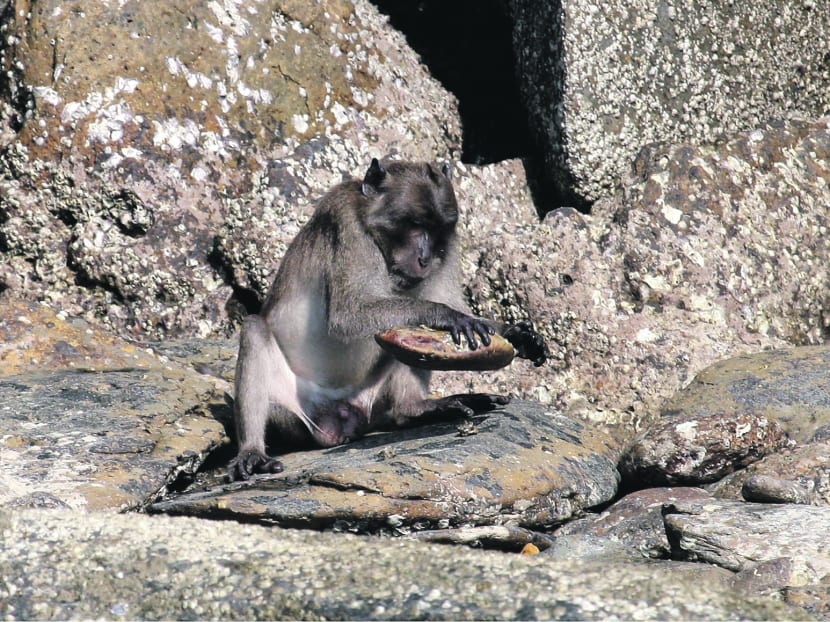Monkeys’ habit of using tools under threat: Study
SINGAPORE — Burmese long-tailed macaques have a special trait — they are the only monkeys in Asia known to use stone tools, much like our ancient ancestors might have. But this unique behaviour is under threat due to human activity, says a study led by Nanyang Technological University (NTU) researchers.

A Burmese long-tailed macaque using a stone tool to crack open shellfish. Photo: NTU
SINGAPORE — Burmese long-tailed macaques have a special trait — they are the only monkeys in Asia known to use stone tools, much like our ancient ancestors might have. But this unique behaviour is under threat due to human activity, says a study led by Nanyang Technological University (NTU) researchers.
These monkeys — also known by the scientific name Macaca fascicularis aurea — are a rare variety of the common long-tailed macaques of South-east Asia, found only in Myanmar and bordering areas of Thailand. In a few coastal locations, they have learned to use stone tools to crack hard-shelled prey such as rock oysters, sea snails and crabs. Young macaques learn how to use these tools by copying the behaviour of older monkeys.
The research team, comprising Assistant Professor Michael Gumert from NTU, Professor Yuzuru Hamada of Kyoto and Prof Suchinda Malaivijitnond of Chulalongkorn University, has spent more than a decade studying the Burmese long-tailed macaques living on Piak Nam Yai Island, which is in a marine national park along the western coast of Thailand.
They found that 88 per cent of the island’s adult macaques use stone tools. However, illegal development of rubber farms and oil palm plantations on the island has put this behaviour under threat.
Aside from the loss of the macaques’ forest habitat due to the illegal development, humans are also competing with them for food by harvesting shellfish at the protected coasts, the researchers said.
Dogs guarding the illegal farms are another problem. As these macaques are forced to constantly keep a lookout for dogs that might attack them as they forage for food on the coast, researchers say they are paying less attention to learning tool-using from their seniors.
“Traditions need safety and stability to properly develop. Otherwise, the coasts just become a danger area that macaques must learn to avoid, rather than a stable learning ground for developing tool-use,” said Asst Prof Gumert.
“If these changes continue, the macaques could alter their foraging strategies and potentially limit further development of their stone-using traditions in future generations,” he added.
Only two other primate species in the world — the chimpanzees in Africa and capuchin monkeys in South America — use stone tools, which means the macaques provide a rare opportunity to study tool-use in primates. “Knowing about primate stone-tool-use has important implications to compare with early hominine tool use, as well as the origins of cultural behaviour. Studying traditions allows us to investigate the cultural capacity of animals,” said Asst Prof Gumert.
“We need to have better protection for these macaques. Otherwise, I am worried they will lose their natural foraging behaviour, like many macaques in Singapore and other parts of South-east Asia already have.”







